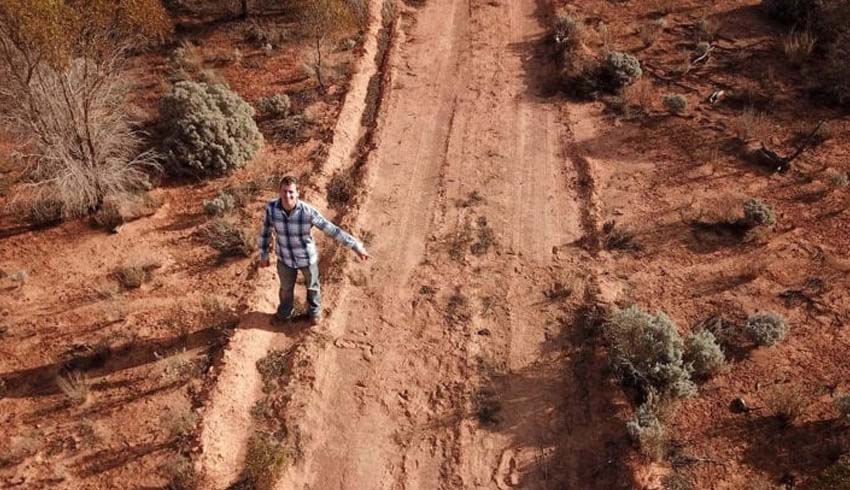The researchers, part of the Desert Fireball Network (DFN), observed both falls as shooting stars using cameras across Australia to predict where the meteorites would land.
The team, which usually searches from March to October, was postponed due to COVID-19, but as restrictions lifted it observed another meteorite fall just south of the Eyre Highway near Madura.
Astronomer Dr Hadrien Devillepoix and planetary geologist Dr Anthony Lagain originally went on a reconnaissance mission to assess the latest fall site near Madura, taking drone imagery of the area.
Dr Devillepoix said that as they were walking back to their car along the old telegraph track near Madura Cave, they spotted what appeared to be a real meteorite on the ground just in front of them.
"I thought Anthony was playing a prank on me, that he planted one of the fake meteorites we were using for the drone training session. But after a closer inspection, it was evident that the fist-sized, 1.1-kilogram rock we just found was indeed the meteorite we were after," he said.
Dr Devillepoix explained that although the rock was very close to the predicted fall position, the team was not expecting to find it that quickly in this bushy terrain.
"Most meteorites contain a lot of metallic iron, a lot more than normal Earth rocks. This is why meteorites typically attract a magnet, or make a nearby compass ‘go crazy’," he said.
Dr Devillepoix explained that not only do the fireball cameras allow the team to calculate where the meteorites land, they also allow it to backtrack where they came from and what orbit they were on before they hit Earth.
"We were able to determine that this meteorite was on an Aten orbit, which means that before it fell to Earth, the meteorite spent most of its time in the innermost solar system, between Venus and Earth," he said.
"This type of orbit is unusual because, as most meteorites come from the asteroid belt between Mars and Jupiter, they usually retain an orbital connection to this area of space."
Two weeks later, Dr Martin Towner, operations chief of the team, led the six people team to search the site of the November 2019 fall. This fall was north-west of Forrest Airport in the middle of the Nullarbor.
After just four hours of searching, they found the 300-gram meteorite that the DFN had seen come in on the night of 18 November 2019.
This one came from a radically different orbit, pointing to the middle part of the main asteroid belt. The team is now working to uncover what secrets the two rocks hold.
John Curtin Distinguished Professor Phil Bland, the dDirector of the Space Science and Technology Centre, explained his team is able to learn more about meteorites on Earth by analysing data collected from strategically placed camera observatories, known as the DFN.
"The DFN cameras continuously take pictures of the sky every night, and when more than one station detects a fireball, we receive an alert, and then we analyse that data so we can learn more about the fireball," Professor Bland said.
Dr Eleanor Sansom, project manager of the DFN, said that although these rapid successes make finding meteorites sound easy, this is an incredible achievement.
"Teams around the world have been trying to recover meteorites with orbits since the 1950s, but so far only around 40 have been recovered overall, and although the DFN is relatively new in this game, it already accounts for a significant part of this success," Dr Sansom said.

